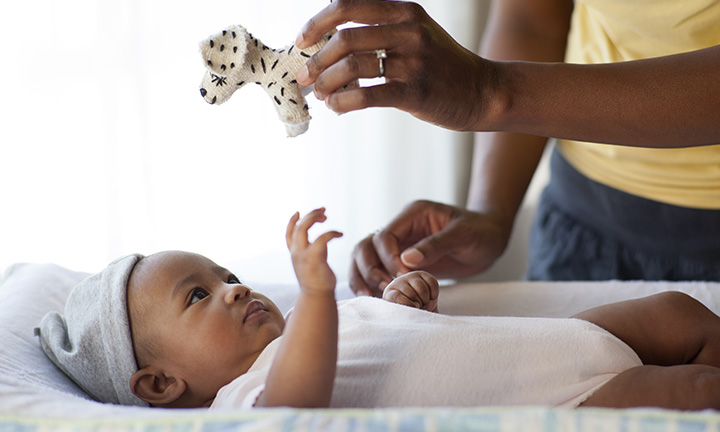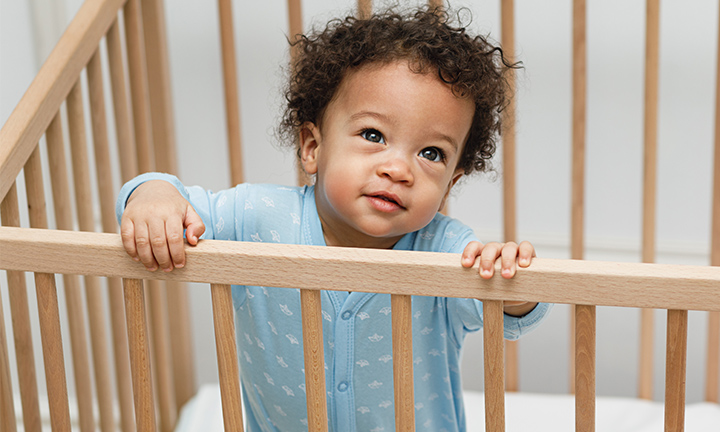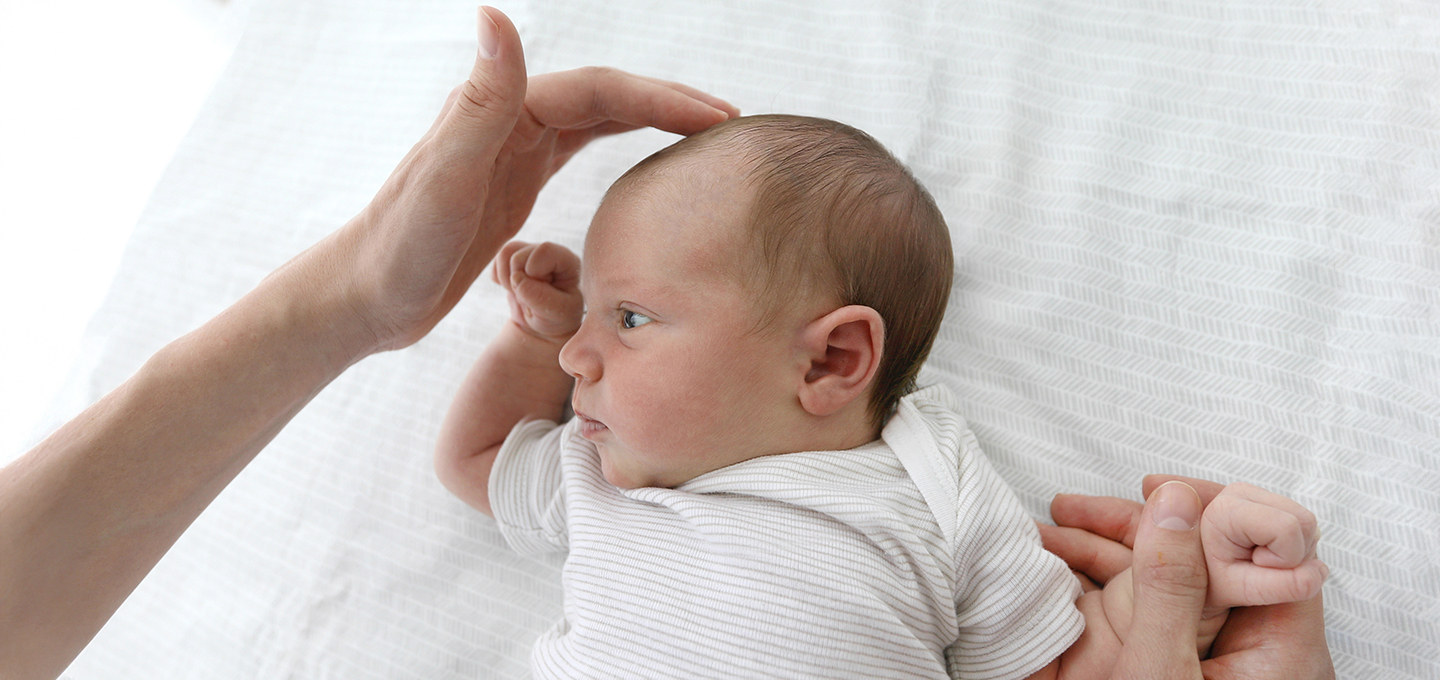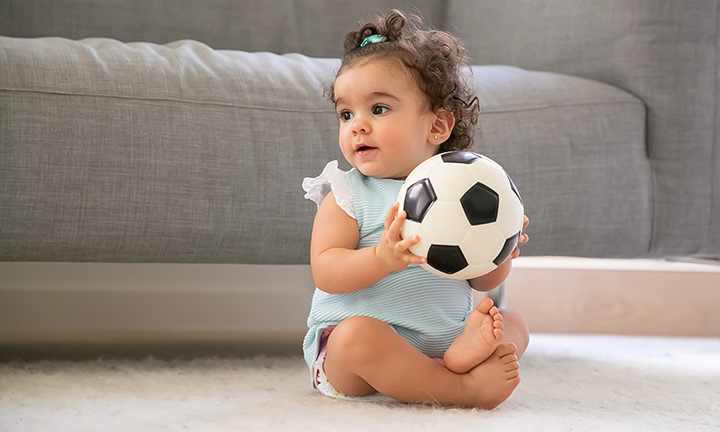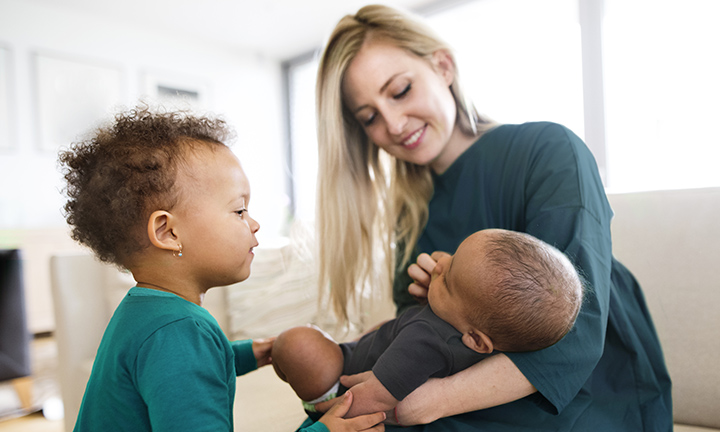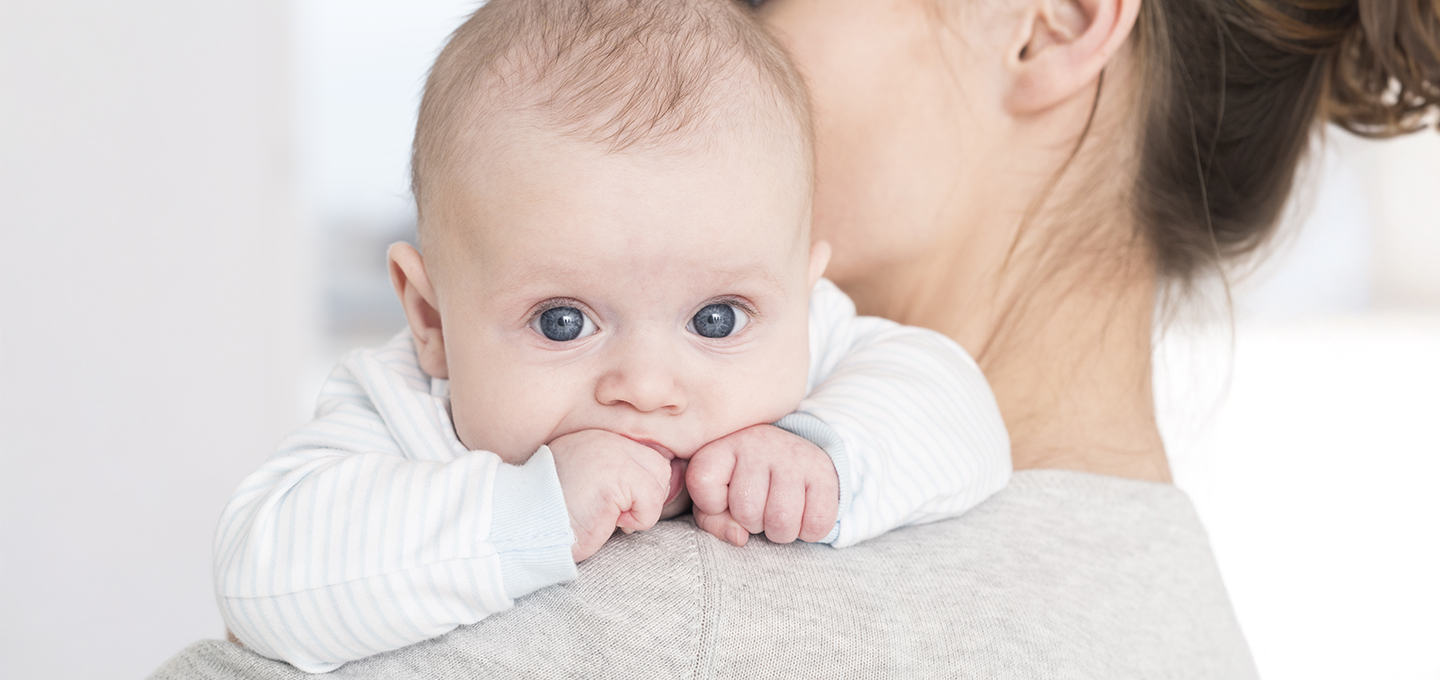
When Do Babies’ Eyes Change Color?
You've waited so long for this moment—looking into your newborn's eyes for the very first time. What's interesting to know is that the eye color your baby was born with might be their final eye color, or maybe not: the color may change over the coming months and years. And if you’re wondering whether your little one’s eye color will take after your eyes, your partner’s eyes, or perhaps one of the grandparents’ eyes, read on! We’ll explain what impacts eye color, why it may take time for your baby’s eyes to reach their final color, and when you might know what color their eyes will be. You can also check our eye color chart for various color possibilities.
What Is Eye Color?
Eye color actually refers to the appearance of the iris, which is the muscular ring that surrounds the pupil (the black part) of each eye. The iris helps control the amount of light that enters the eye. The color of the iris can range from very pale blue all the way to very dark brown.
Your baby’s pupils will always be black, and the sclera (the whites) of your baby’s eyes will almost always be a shade of white—unless, for example, your infant is ill with jaundice, causing a yellow color, or their eyes have some sort of inflammation and are pink or red.
What Color Eyes Are Babies Born With?
A common misconception is that all babies are born with blue eyes. The color of babies’ irises actually depends on melanin, a protein secreted by special cells called melanocytes that also give your baby’s skin its color. Babies whose heritage is dark-skinned are frequently born with brown eyes, whereas light-skinned newborns tend to be born with blue or gray eyes.
Since melanocytes respond to light, at birth, a baby may have eyes that appear gray or blue, in large part due to the lack of pigment and also because they’ve been in a dark womb up until now. As a baby is exposed to more light, their eye color can change over time (even several years).
If the melanocytes secrete just a little more melanin, a baby may end up with blue eyes. Just a little more melanin, and their eye color may be green or hazel. Brown eyes, which are the most common, are the result of very active melanocytes secreting lots of melanin. Brown eyes are likely to remain brown throughout life.
Do All Newborns Have Blue Eyes?
No. As we mentioned above, some babies may have eyes that appear gray or blue because of the lack of pigment. As the baby is exposed to light, the eye color can start to change. Newborns with darker skin are more likely to be born with brown eyes.
When Do Babies’ Eyes Stop Changing Color?
When do a newborn’s eyes change color, and when is the eye color set in an infant? It takes about a year for the melanocytes to finish their job and for the final color to come in. While the rate of color change does slow down after a baby is about 6 months, the color can still change after this time.
Sometimes, the color change can continue for several years before the eye color becomes permanent.
What Color Will Your Baby’s Eyes Be?
A common question from parents-to-be is, “What color eyes will my baby have?” Eye color is determined by genetics, with multiple genes determining the amount and quality of melanin present in the iris.
You can’t necessarily predict your baby’s eye color just by looking at your own eye color and your partner’s eye color, but sometimes you can guess correctly.
Here are some possibilities when it comes to your baby’s eye color (but remember, this isn’t guaranteed):
What Is the Most Common Eye Color?
Brown is the most common eye color around the world. Around half of the population of the United States have brown eyes. Brown eyes are also more common in hotter climates due to higher levels of melanin in people’s skin, eyes, and hair, which helps protect them from the sun’s rays.
Why Do Some Babies Have Different Colored Eyes?
Some babies have different colored eyes, known as heterochromia. Each eye could be a different color, such as one blue eye and one hazel eye, or a single eye could have patches of different colors, such as a brown eye with a section of gray. The condition is typically caused by variations in melanin, the pigment responsible for the color of our skin, hair, and eyes. This discrepancy can be attributed to genetic mutations, genetic inheritance, or a result of an injury or illness.
If your baby has different colored eyes, talk to your healthcare provider, who will offer more information. It’s also advisable to consult a healthcare professional for further evaluation if heterochromia occurs suddenly or changes over time.
Eye Color Chart
Although you can’t necessarily predict your newborn baby’s eye color, don’t let that stop you from having a little fun by guessing what the outcome will be. From light shades of gray and blue to dark green, hazel, and brown eyes, check out our eye color chart for some colors your newborn baby may have:
FAQS AT A GLANCE
Rare eye colors include green and hazel. In the United States, around 9 percent of people have green eyes, while 18 percent have hazel eyes, compared to 45 percent who have brown eyes.
The Bottom Line
Your baby’s eye color is just as unique as they are! No matter what color your baby’s eyes end up being, you’ll simply love gazing into them. We hope you had fun learning a little bit about the genetics behind your baby’s eye color and checking out our eye color chart for possibilities. In just a little time, your baby’s final eye color will reveal itself. This is just one of the many physical and personality traits that will start to unfold before your eyes in the months and years to come.
Speaking of eyes, you might be interested in our article on when babies can see. And don't forget that during this period, you’ll be changing lots of diapers. You can earn Pampers Cash for all your purchases with the Pampers Rewards app and use them to get discounts on the products you already buy and love.
- American Academy of Pediatrics. Caring for Your Baby and Young Child: Birth to Age 5, 7th ed. (New York: Bantam Books, 2019).
- American Academy of Ophthalmology. “Your Blue Eyes Aren’t Really Blue.”
- American Academy of Ophthalmology. “Why Are Brown Eyes Most Common?”
- Cleveland Clinic. “Eye Colors.”
- Cleveland Clinic. “Heterochromia.”
- Genetics Home Reference. “Is eye color determined by genetics?”
- HealthyChildren.org. “Newborn Eye Color.”
- Mayo Clinic. “Skin layers and melanin.”
Read more about Baby
Related Articles
Join a World of Support
through Pregnancy and Parenthood.
TRACK WITH TOOLS
LEARN WITH EXPERTS
GET REWARDED

